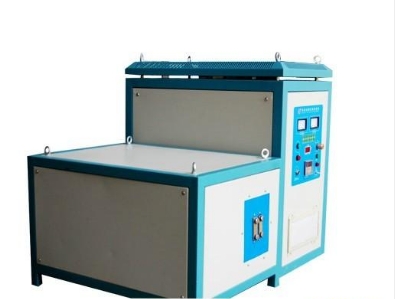- 15
- Oct
What are the effects of various elements in steel on induction hardening of steel?
What are the effects of various elements in steel on induction hardening of steel?
(1) Carbon (C) Carbon determines the hardness that can be achieved after quenching. The carbon content is high and the quenching hardness is high, but it is easy to quench cracks. Generally, w(C) is selected to be 0.30% to 0.50%, and the hardness value obtained in this way is about 50 to 60HRC. The upper limit of the hardness value is restricted by the carbon content. Practice has proved that this carbon content is about 0.50%. Higher carbon content is sometimes used. For example, rolls are made of steel with w (C) 0.80%, w (Cr) 1.8% and w (Mo) 0.25%. Carbon steel that does not contain alloying elements requires a high cooling rate, so it deforms greatly, has a high tendency to crack, and has poor hardenability.
2) Silicon (Si) In addition to improving strength and hardenability, silicon in steel can also remove gas in steel during steelmaking and play a sedative effect.
(3) Manganese (Mn) Manganese in steel improves the hardenability of steel and reduces the critical cooling rate. Manganese forms a solid solution in ferrite when heated, which can increase the strength of steel. Manganese steel is commonly used when the depth of the hardened layer is greater than 4mm. Because it reduces the critical cooling rate, uniform quenching hardness can be obtained under conditions where the cooling specification is not stable.
(4) Chromium (Cr) Since chromium in steel can form carbides, it is necessary to increase the heating temperature and prolong the heating time, which is disadvantageous to induction hardening. But chromium improves the hardenability of steel (similar to manganese), and chromium steel has higher mechanical properties in the quenched and tempered state. Therefore, 40Cr and 45Cr are often used in the manufacture of heavy-duty gears and spline shafts. The m (Cr) in induction hardened steel is generally not more than 1.5%, and the highest is not more than 2%. Under special circumstances, induction hardening can also be performed when w (Cr) is less than 17%, but a very high heating temperature is required, and the heating temperature is below 1200T. At this time, the carbides will quickly dissolve before they can be fully quenched.
(5) Aluminum (Mo) Aluminum in steel can improve hardenability, and the content of molybdenum in steel is very small.
(6) Sulfur (S) Sulfur in steel will form sulfide. Tests have shown that when the sulfur content is reduced, the elongation and reduction of area are improved, and the impact toughness value is increased.
(7) Phosphorus (P) Phosphorus in steel does not form phosphide, but is easy to cause serious segregation, so it is a harmful element.

